
Advancing Canine Cloning: Sinogene's Remarkable Achievement in Scientific Research
Cloning dogs is a challenging endeavor in scientific research, but Sinogene has successfully brought dogs back to life! As a pioneering enterprise in canine cloning technology in China, Sinogene has earned a prestigious reputation. In the academic realm, China stands as the third country to acquire this groundbreaking technology. The scientific exploration of cloning dogs presents numerous obstacles, making the triumph over these challenges a remarkable source of inspiration.
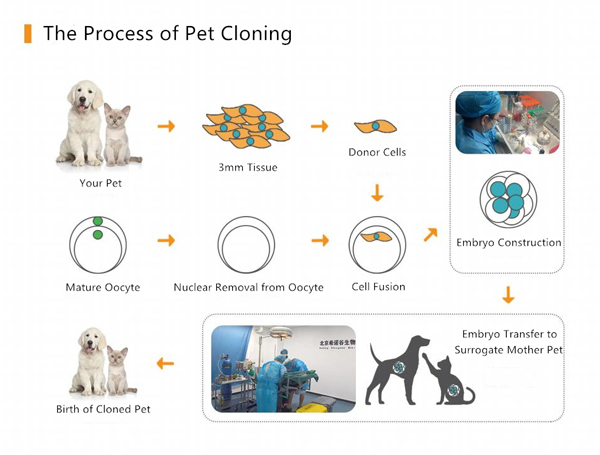
Cloning Process
Dr. Zhong Yougang, Associate Professor of Clinical Veterinary Medicine at China Agricultural University, has previously discussed the challenges of cloning dogs. He mentioned that the canine oviduct is surrounded by fat, making it difficult to observe the maturation status of internal eggs. Additionally, the production of newly cloned embryos requires electrochemical activation, and the voltage required needs to be experimented with. “Each step has been explored for a long time.” In fact, the research difficulty of cloning dogs is not limited to one or two aspects, as the unique physiological system and body structure of dogs minimize the effectiveness of previous cloning experiences on other animals.
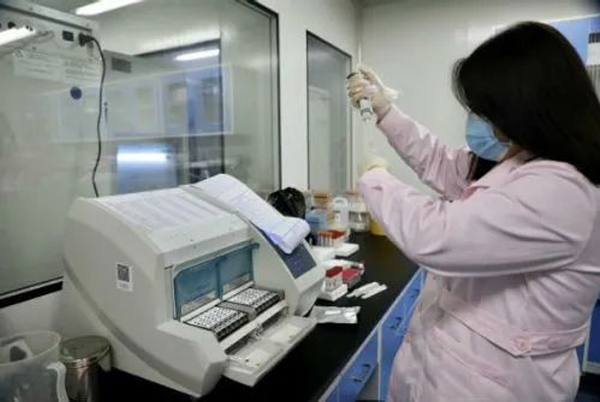
Inside the Sinogene laboratory, staff members are testing various indicators, including progesterone levels, in each experimental dog to determine the optimal timing for cloning.
Firstly, the difficulty lies in the process of oocyte retrieval in dogs. Dogs only go into heat naturally twice a year, unlike cats that can go into heat and ovulate every 21 days. Dogs cannot be hormonally induced to go into heat and ovulate like cats.
Secondly, compared to other cloned mammals, the reproductive system of dogs is quite unique. The eggs they release are immature and cannot be fertilized. The eggs can only mature inside the oviduct and cannot mature outside the body. The window period from egg maturation to aging is only a few hours, so it requires precise timing to determine the maturity of the oocyte. The conditions for in vitro culture are also sensitive, and nuclear removal is more challenging. Accurate determination of ovulation and oocyte maturation time in dogs is crucial, as missing the timing would require waiting for another six months or even a year.
Thirdly, the physiological structure of dogs also makes the surgery more difficult. The ovaries of dogs are not directly exposed but are enveloped by ovarian sacs. Additionally, the oviducts of dogs are wrapped around the surface of the ovaries, making the processes of flushing the oocytes and embryo transfer more challenging.
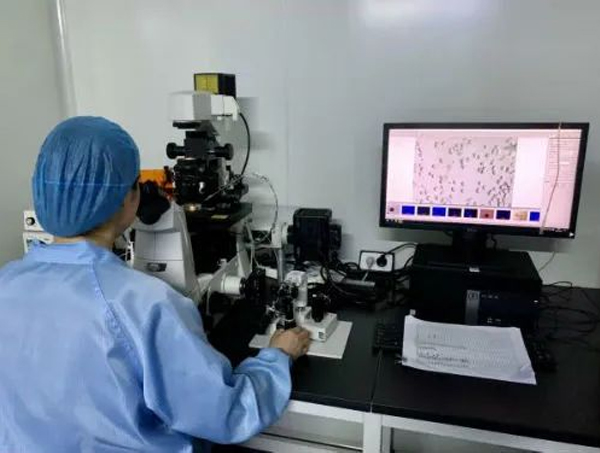
Under the microscope, researchers select high-quality somatic cells for cloning.
Lastly, on average, a dog ovulates 7-8 eggs each time. If oocyte retrieval is done too early, the eggs may not be mature enough. If it is done too late, the eggs may age easily. Moreover, dog oocytes are sensitive to external stimuli, and they are prone to cell death during microscopic manipulations (such as nuclear removal and implantation) of cells or embryos in vitro.
Of course, these challenges that have been mentioned above have already been overcome by the researchers at Sinogene. Thanks to Sinogene’s focus on multidimensional exploration in animal cloning basic research, they not only have a highly efficient and professional technical team composed of multiple doctors but also have a well-equipped animal experimental center and a multi-species animal cloning technology platform. This enables the smooth progression of the cloning process for dogs, from oocyte retrieval, nuclear transplantation, cloned embryo development, cloned embryo transfer, and finally to surrogate dog pregnancy. After a gestation period of about 60 days, the cloned dog from somatic cells can be born, embracing this beautiful world.
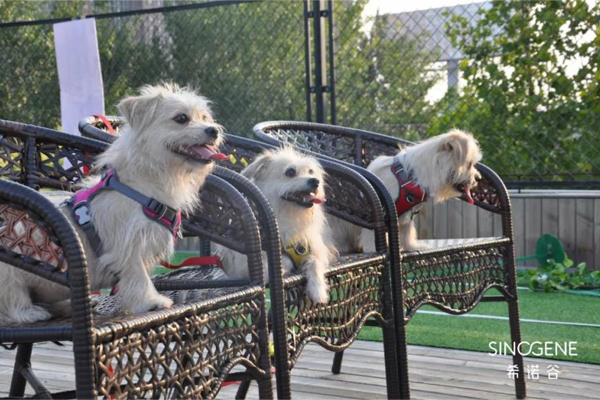
At Sinogene, in December 2016, the world’s first genetically edited atherosclerosis model dog named “Apple” was born. In May 2017, the world’s first genetically edited cloned dog and China’s first somatic cell cloned dog were born. On July 21, 2019, China’s first commercially cloned cat named “Garlic” was born.
Sinogene has delivered nearly 500 cloned animals to date.
Next, let me provide some insights into how Sinogene conducts pet cloning:
In the homes of cloning clients or Sinogene laboratories, the first step of pet cloning—sample collection—is completed. Samples are delivered to Sinogene laboratory within 48 hours. Subsequently, the process includes cell separation, cultivation, nucleus transplantation, cloning embryo development, cloning embryo transplantation, surrogate animal pregnancy, eventually the birth of cloned animals.
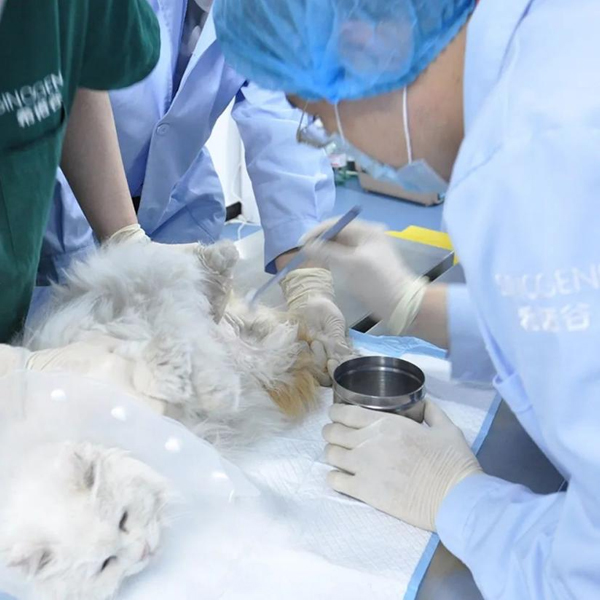
Within three months of the birth of cloned pets, Sinogene delivers them to the pet owners with an authoritative "Genetic Identification Certificate" from a third-party testing organization. This certificate includes reports on the genetic identity of the donor dog/cat and the cloned dog/cat. All owners who have their pets cloned at Sinogene will receive these relevant credentials.
In terms of similarity, from a scientific perspective, cloned animals are a complete replication of the genetic sequence of the original individual. The cloned animal has an identical genome sequence to that of the donor animal's cell. Therefore, traits determined by genes, such as morphological features, temperament, and body structure, are very similar.
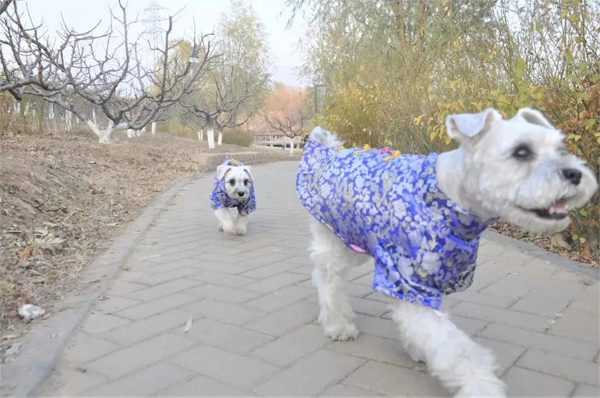
While pet cloning may be a novel concept for many, it is not a mysterious technology. As a scientific endeavor to unravel the mysteries of life, it has matured with advanced technology and numerous successful cases. More and more pet owners are now opting for pet cell preservation, preparing for potential pet cloning in the future. With technology, qualifications, and experience, Sinogene is continuously striving to bring hope for the "return" of pets to an increasing number of pet-loving families!
